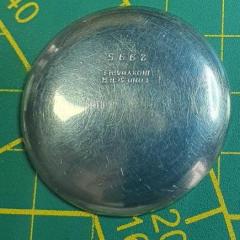Broken Stem Inside Crown...
-
Recently Browsing
- No registered users viewing this page.
-
Topics
-
Posts
-
I don't trust myself with a hammer! It's funny though - I've got my dad machining up several little crystal press attachments when really I could just hammer it!
-
By HectorLooi · Posted
Copper is not magnetic too. Your pins are probably steel. -
My take on this: If your plan is to continue this hobby, try and get a machine or build one yourself and use "proper" liquids. Good ventilation is very important. One option is to make a small cabinet with a (bathroom) fan and a hose: Pocket watches are (only a bit) easier to work on because of their size, but often need more advanced skills. For instance, they often need a new balance staff or repivoting, have broken teeth, cracked jewels etc. You might be better off starting on wristwatches right away (mens, not ladies).
-
Just thinking about this and with it being bent you could be measuring slightly under so could be a 10 not an Ancien. The roller table dimension should answer this.
-
The cost factor really isn't an issue. If you doing this as a hobbyist in other words you don't have to please a manufacturer or a customer then you don't have to worry about the expiring date providing you keep your oil in a cool dark location not a cold location just out of the sun and the lubrication the synthetics should last Almost probably forever. The biggest concern typically for watch companies with long term storage is contamination of each time you extract oil out of the. Then what is your definition of it doesn't work and you'd have to service the watch again?
-



.thumb.jpg.19a9c4ff164d78d516aa9f05a063752b.jpg)



Recommended Posts